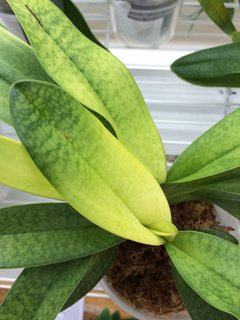Happypaphy7
Paphlover
This is one of my Pink Sky plants.
For some reason, new leaves come out very pale green, almost yellow green, in fact, they are brighter in person, and as they age, it darkens from the tip down.
I treat them all the same way, but only this one behaves this way.
Special?

For some reason, new leaves come out very pale green, almost yellow green, in fact, they are brighter in person, and as they age, it darkens from the tip down.
I treat them all the same way, but only this one behaves this way.
Special?

Last edited:







































